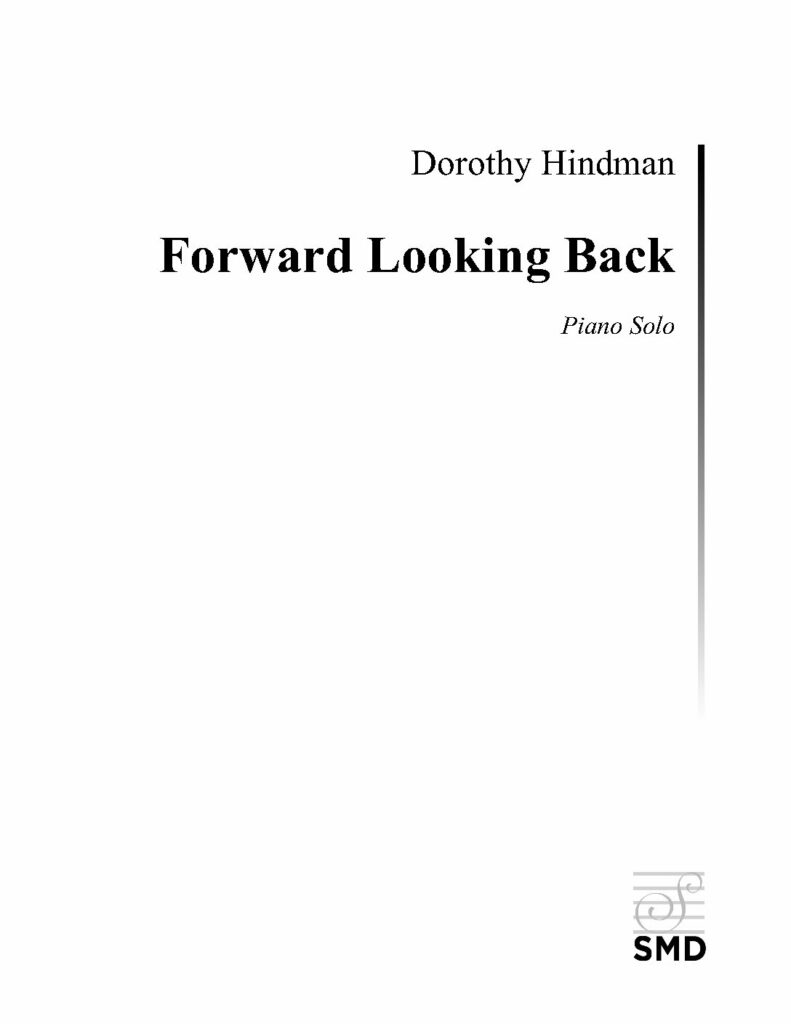Forward Looking Back
Reviews:
“Dorothy Hindman’s solo piano Forward Looking Back combined the freedom of Charles Ives with the shimmer of Claude Debussy, without mimicking those composers. Its allure lies with its passion and lyricism, which seem to bound past any stylistic restraints.”
~Michael Huebner, “New York, Birmingham duel by using new compositions,” The Birmingham News, Tuesday, August 5, 2003
“Dorothy Hindman’s Forward Looking Back was given a commanding performance by Marc Couroux. This is music of terrific romantic gesture. Particularly attractive was a dreamy mood movement, a kind of improvisation for a night in the city.”
~Thomas Putnam, “June Bugs: Young Composers are grounded in the past,” The Buffalo News, June 10, 1994
Program Notes:
Forward Looking Back(1991-92) is a suite of six works for piano solo. The three odd numbered movements are thematically and for the most part conceptually unrelated and can be played as standalone works. The even numbered movements are quite short and are built entirely from direct quotes from the odd numbered movements.
Turning Apples, Slicing Screws uses an expanding interval row to create a form of tonal music, with a descent from C to A unifying the piece. It is based on “Slicing Apples, Turning Screws,” a book chapter by theorist/composer George Perle, who asserted that you should use the correct tool for a given job.
Concentricity juxtaposes the different repeated note figures found in all of the odd numbered movements of the suite to create overlapping rhythmic and metric patterns, like concentric rings made by pebbles cast into a pool of water.
Implicit Wish is a dreamy toccata movement, where the moto perpetuo’s trajectory is constantly disrupted as it grows from pitch to melody to chordal statement.
Release quotes long melodic lines from the first and fifth movements to dissipate the unfulfilled energy of Implicit Wish.
Wanting…Night Music is Debussy through a prism, a variation on a nocturne, with its own interruptions. Like the first movement, this also has a unifying motive, but it isn’t revealed completely until the final bars of the word.
Linger acts as the gestalt of the work, recalling those moments that one might remember after hearing the entire work.
Premiere: December 1992
Mary Kaufman
Uncommon Practice Concert
University of Miami, FL
European Premiere: May 1995
Kolumna New Music Festival
Kolumna, RUSSIA
Publisher: Subito Music Distributors
